4 Symptoms of a Bad Wheel Speed Sensor (and Replacement Cost)
Today’s vehicles use many types of sensors, including those that measure engine speed (crankshaft/camshaft position), transmission speed, and wheel speed. Wheel speed sensors in particular are quite dependable but can still fail due to their location.
Let’s look at some of the most common symptoms of a bad wheel speed sensor, whether it’s safe to continue driving, and how much it’s going to cost to replace the speed sensor.
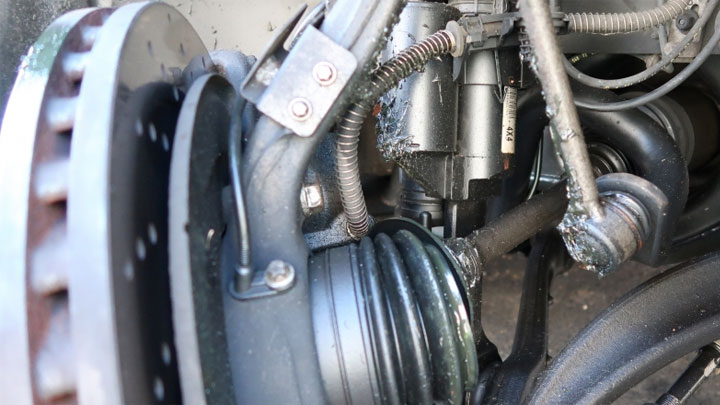
What is a Wheel Speed Sensor?
Whether you call it a Wheel Speed Sensor (WSS) or ABS Sensor, this electrical device provides feedback regarding the rotational speed of a single wheel on a vehicle. These sensors are not to be confused with a vehicle’s transmission speed sensor, which performs a different task altogether.
Wheel speed sensors are generally magnetic in nature, allowing them to create measurable “pulses”, as a hub-mounted tone ring rotates in front of their probes.
The speed at which these pulses are created has a direct bearing upon the detected speed of the wheel in question, as interpreted by a vehicle’s management software. The more pulses created within a specific time frame, the faster the wheel’s registered rotational speed.
Wheel speed sensors come in two individual configurations.
- The first of which is a passive sensor, which is analog by nature, and does not require a reference voltage to facilitate function.
- The second configuration of the wheel’s speed sensor is that of an active design. These sensors do require an input voltage for operation, and utilize an encoder-style tone ring.
Most late model vehicles use the latter of these two sensors, due to its innate reliability.
A vehicle’s management software uses feedback from one speed sensor, to compare with feedback transmitted from all other wheel speed sensors found on the same vehicle.
By these means, this software can determine if one of a vehicle’s wheels is spinning faster than any others, indicating a possible slide or impending brake lockup.
Where Is It Located?
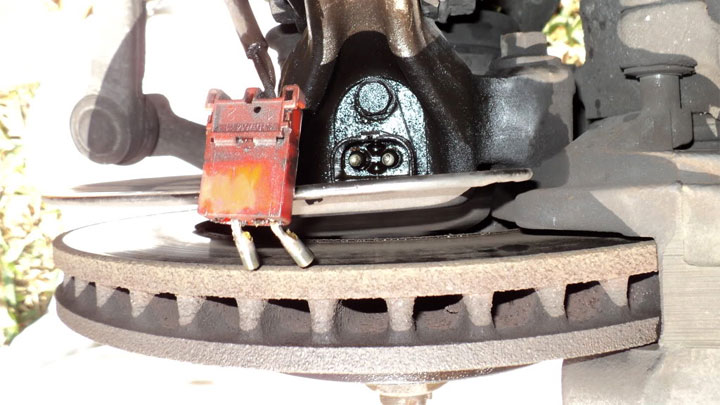
Wheel speed sensors can be found mounted within each of a vehicle’s four hubs. The exact location of such a sensor can be easily identified tracing the electrical pigtail that terminates at its point-of-mount.
This wiring generally runs down a vehicle’s frame rail, before anchoring off to an individual wheel-end’s brake hoses or hub assembly.
The wheel speed sensor itself is countersunk into its corresponding hub assembly, with its outer face residing within close proximity to a hub-mounted tone ring. This positioning is essential, as a speed sensor would not function without being mounted in a way that allows it to interface with this inset tone ring as intended.
Bad Wheel Speed Sensor Symptoms
The presence of a faulty wheel speed sensor is often accompanied by several secondary symptoms, some of which tend to be more noticeable than others. Early recognition of these symptoms can prove invaluable when attempting to expedite the repair of the issue at hand.
The following are several of the most common symptoms associated with a faulty wheel speed sensor.
#1 – Illumination of ABS (or Stability Control) Light
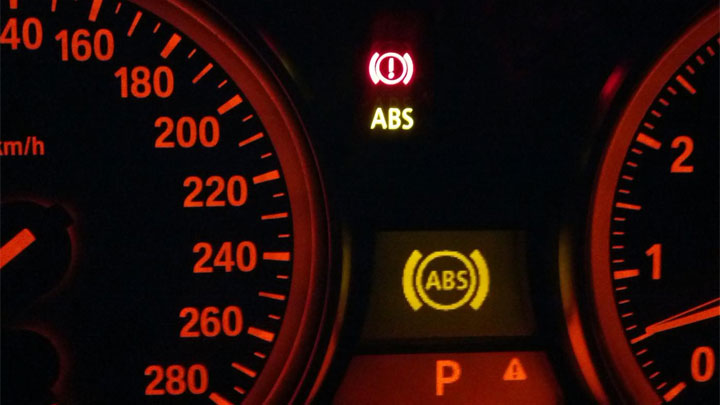
More often than not, the detection of a faulty wheel speed sensor (ABS sensor) by a vehicle’s control software will cause an ABS warning light to illuminate. This is the result of an ABS-related fault being stored.
In some cases, manufacturer specific traction or stability control warnings (ie: Service StabiliTrak, VSA, Service AdvanceTrac) will also make their presence known.
Related: DTC C0035 (Left Front Wheel Speed Sensor), DTC C0040 (Right Front Wheel Speed Sensor)
#2 – Lack of Active Safety System Functionality
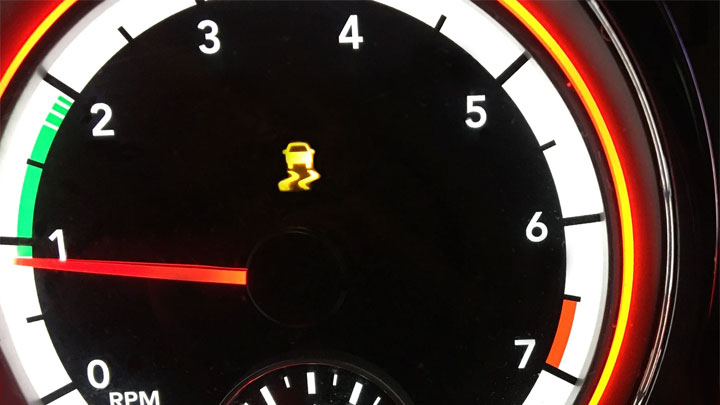
A vehicle’s anti-lock brakes, stability control, and traction control all rely upon feedback from each of a vehicle’s wheel speed sensors. In the bulk of cases, these systems are locked out from use, whenever a wheel speed sensor malfunction is detected.
#3 – Brake Pedal Pulsation
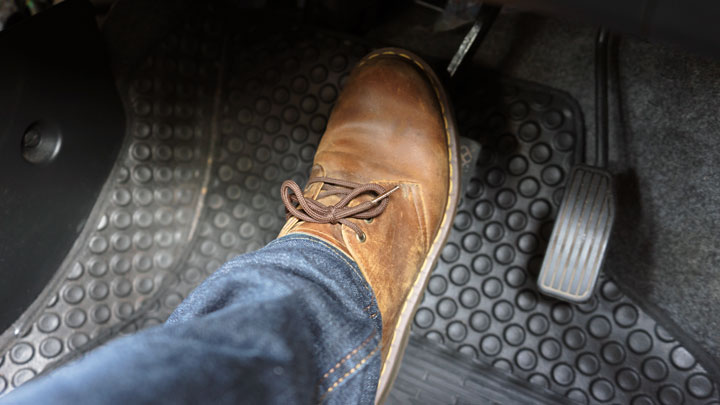
In rare cases, a vehicle’s brake pedal might actively pulsate, as if an ABS-modulated brake application were being made when simply driving down the road.
As mentioned, this is a rather rare symptom that is more likely to plague older vehicles, than those of a more recent vintage.
#4 – Increased Stopping Distances
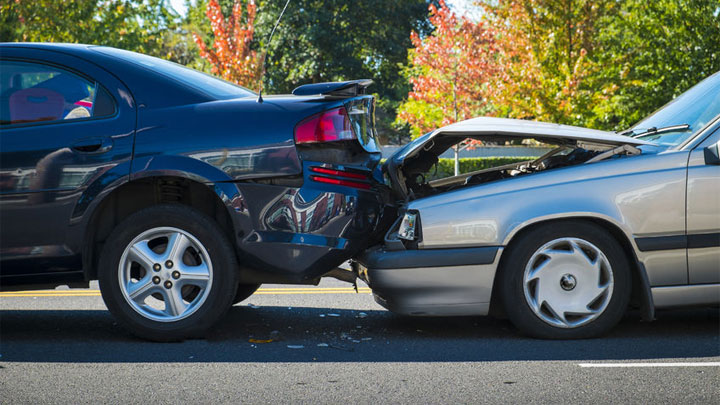
You might also notice that it takes longer to stop your vehicle after one or more wheel speed sensors have failed, especially during emergency or panic stops. This is largely due to the lack of ABS function that results from the automatic lockout mentioned above.
What Causes a Wheel Speed Sensor to Fail?
A wheel speed sensor can fail for a number of reasons, some of which tend to be more prevalent than others. For example, the sensor can be irreparably damaged by a debris strike that results from hitting any solid material deposited in the roadway.
Alternatively, a wheel speed sensor’s signal can be impeded by the collection of metallic debris in or around its magnetic element.
On top of that, a wheel speed sensor can also be compromised whenever its wiring is damaged, or as the result of excess corrosion build-up on its connector. Either of these conditions can cause excess resistance within the speed sensor circuit itself, or even result in an open connection in the most severe of cases.
Wheel Speed Sensor Replacement Cost
Best places to order parts? See: 19 Best Online Auto Parts Stores

The exact cost of wheel speed sensor replacement can vary from one make and model of vehicle to the next. In many cases, one manufacturer will charge significantly more for a speed sensor than others.
Alternatively, labor rates for the replacement of a particular speed sensor might be much higher on one model of vehicle than the next.
On average, you can expect to pay between $150 and $300 to have one of your vehicle’s wheel speed sensors replaced.
Generally speaking, approximately 1/3 of this cost will be attributed to the purchase of the sensor itself, while roughly 2/3 will relate to the labor involved with such a repair.
Is It Safe to Continue Driving?
While you can continue to drive with a compromised wheel speed sensor, doing so is not advised. A number of active safety systems, such as anti-lock braking, stability control, and traction control rely upon the use of a vehicle’s speed sensors to facilitate proper operation.
In most cases, these systems will be automatically disabled in the event of an individual sensor failure.
Knowingly operating a vehicle for an extended period of time with one or more safety systems disabled due to mechanical failure poses multiple issues. The first of these issues relate to your safety, your passenger’s safety, and the safety of all others in traffic.
Additionally, you might be forced to accept additional liability in the event that such negligence was to cause a collision.
In any event, the root cause of a vehicle’s wheel speed sensor fault should be thoroughly diagnosed and repaired as soon as possible. Doing so is simply the best practice when seeking to maximize your safety.
If you are not confident in your ability to handle these repairs on your own, it is recommended that you schedule an appointment with a reputable service center as soon as possible.
How a Mechanic Diagnoses a Faulty ABS Sensor
In most cases, a scan tool is used to identify the offending wheel speed sensor, including its individual wheel-end location. From this point, an oscilloscope or premium-grade digital multimeter is used to analyze feedback from the affected sensor or a lack thereof.
Alternatively, an all-encompassing bidirectional scan tool can often be used to monitor wheel speed sensor feedback in real time.
Aside from these diagnostic practices, a mechanic is also likely to perform a thorough visual inspection of a suspected wheel speed sensor, and all related wiring. At times, especially when a debris strike has occurred, damage to the affected sensor is rather obvious and easy to spot.
It is also important for them to check the air gap between a speed sensor and its corresponding tone ring as well.
- 5 Symptoms of an EVAP Leak (and Repair Cost) - Apr 27, 2024
- P0480 Code (Symptoms, Causes, and How to Fix) - Apr 19, 2024
- Car Temperature Gauge Stopped Working? (Here’s Why) - Apr 15, 2024

I have a 2006 toyota camry v6 3.0 it saying did a diagnostic at auto zone its saying bad knock sensors and bad speed sensor and my car shakes when I drive over 60 and when I use my GPS my speedometer will say 65 but my GPS says my car is going 60. So do I need to change the speed sensor or knock sensors or both
That’s not something that can really be diagnosed over the internet. You’ll have to have a mechanic look at your car in person to determine what needs to be replaced.